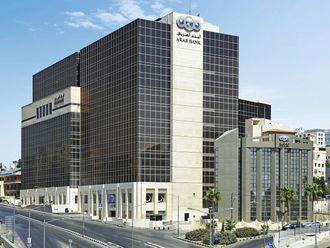Due to the inadequate quality (not volume) of bank disclosures, it is now clear that in the run-up to the financial crisis, investors were unable to exercise market discipline as they only had a partial grasp of bank risk exposures. This situation has led to an erosion of trust and increased risk aversion.
Why is transparency important in the GCC?
Transparency in general is important to provide confidence in the market and protect individuals from malpractice of certain players in the industry. The public in this region generally feels that they are powerless when facing financial institutions. One recent example of progress was the recent amendments to regulatory laws within the Dubai International Financial Centre (DIFC) in August. His Highness Shaikh Mohammad Bin Rashid Al Maktoum, Vice-President and Prime Minister of the UAE and Ruler of Dubai, recently put these in place to simplify and improve the structure and process for regulatory decisions and for appeals against those decisions. We hope that we will see these positive changes in other parts of the UAE, Bahrain, Kuwait and other countries in the region in the future.
Why is transparency important for investors in banks more generally?
Investor trust and willingness to supply risk capital (whether equity or unsecured debt) is crucial to for the banking sector to work well. A recently CFA Institute study, ‘Financial Crisis Insights on Bank Performance Reporting’, shows that widened credit default swap (CDS) spreads and low Price-to-Book ratios of banks in the US and EU since the beginning of the financial crisis, can in part be explained by the opacity of bank financial institutions and the risk aversion of investors. For example, since 2009, the CDS spreads for investment grade banks are significantly wider than those for non-financial companies, suggesting greater risk aversion towards banks.
What are the key challenges for investors with current bank reporting?
There are three areas worth highlighting. First, bank’s accounts must be a faithful representation of economic reality. Second, even within the same accounting standards, such as International Financial Reporting Standards (IFRS), it is a challenge to compare accounting line items such as loan impairments across different countries. Third key risk exposures must be more readily accessible to investors.
Why is fair value recognition and measurement so important?
Fair value amounts are useful as they can reflect the economic value of assets and liabilities on a particular reporting date. They help understand risk exposure of financial instruments and are informative if judging the breakup value of business models. Disclosing fair value amounts alone (that is, in the notes which accompany financial statements) does not require the same level of rigour from banks as reporting on the balance sheet.
In the long run, both the accounting notions of amortised cost and fair value amounts should still be considered by accounting standard setters. The newly-issued financial instruments accounting standard (IFRS 9) requires just the amortised cost recognition of loans on the face of financial statements with fair value amounts being disclosed in the notes, but standard setters should continue to consider the merits of fair value accounting for all financial instruments.
Can we avert systemic risk by better and globally comparable bank reporting?
The financial reporting of complex financial instruments has often failed to convey the associated risk exposures of reporting entities. There is certainly a need to ratchet up the quality of risk reporting, but it has to be timely and comparable across financial institutions. The Enhanced Disclosure Task Force recently made a number of recommendations relating to risk reporting. This process represents a key step on what may be a lengthy path to improving risk reporting.
Is improved leverage reporting going to stifle economic recovery?
Improved leverage reporting is all about enabling investors to exercise market discipline and for banks to tell it like it is, while taking actions to ensure they are adequately capitalised. A sound banking system should be the bedrock of economic recovery. In a recent discussion paper, it is appropriate and long overdue that the Basel Committee on Banking Supervision recognised the need to incorporate the accounting, non-risk weighted leverage into the framework of assessing capital adequacy.
Accounting leverage can allow investors to judge the relative risk of banks, especially because of the lack of comparable risk weighted assets, which are an input for calculating Tier 1 capital. To help global investors in a truly optimal way, it is necessary to enhance the comparability of accounting leverage across banks in different countries. The failure to converge the IFRS and US GAAP financial assets offsetting requirements was a missed opportunity.
— Vincent Papa, CFA, is director of financial reporting policy at the CFA Institute, and Amer Khansaheb is president of the CFA Society Emirates,












